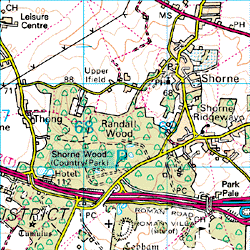Vicinity Map Creator Autocad Tutorial Free
The following tutorials are included in your installation of AutoCAD Map 3D

The following tutorials are included in your installation of AutoCAD Map 3D Introducing AutoCAD Map 3D 2017: Take a quick tour of the application. Create a map file, assign a coordinate system, connect to data, style features, and save your work. Several videos are included to illustrate key concepts. Note: You can use. Notice that there's a default location for the sheet set, which is a DST file. This will probably be in Documents AutoCAD Sheet Sets. Use the default, or click the Ellipsis button to browse to another location that you want to use, and click Open. On the Choose Layouts page, click Browse, navigate to the folder where. AutoCAD Map 3D software is model-based GIS mapping software that provides access to CAD and GIS data to support planning, design, and management.
- Introducing AutoCAD Map 3D 2017: Take a quick tour of the application. Create a map file, assign a coordinate system, connect to data, style features, and save your work. Several videos are included to illustrate key concepts. Note: You can use this tutorial without sample data. However, if you want to work through the exercises in the application, download the sample data from http://www.autodesk.com/map3d-documentation.
The following tutorials are available if you have an Internet connection. You can download the sample data for these tutorials here:http://www.autodesk.com/map3d-documentation:
- Building a map: Learn all the basics of creating a map from start to finish. Use multiple sources, design themes and composite styles to change the appearance of objects, create new features and edit them, and publish your finished map. Watch a video, use the interactive simulation, or follow the written steps and work in the actual application.
- Moving from AutoCAD to AutoCAD Map 3D 2017: Prepare drawings for use with AutoCAD Map 3D, clean up drawing data, add drawing objects to a map, add and edit raster images, and share maps with others.
- Annotating Your Map: Use annotation templates, labels, and text layers to add textual information to a map.
- Classifying Drawing Objects: Define object classes, assign drawing objects to different classes, and then use the object classes to create, edit, and export drawing objects. To be part of the object class, drawing objects must meet certain rules when they are classified. Object classes help to ensure that drawing objects are standardized.
- Creating a Map Book With an Inset: Customize a map book template, create a map book, create an inset, and publish to DWF.
- Analyzing Data: Add a surface and style it using a theme and contour lines to show elevation. Join an external database to a feature and create a style using both sets of data. Create a buffer zone that highlights areas within 1000 feet of a river and identify parcels that lie within that zone. Export comma-separated data to use in a report to the owners of those parcels. Overlay two geospatial layers and save the resulting comparison layer as a separate data store. Edit a workflow to automate editing processes.
- Managing Data From Different Sources: Export drawing objects to Autodesk SDF format, and then connect to the resulting SDF file to add it as a layer in another map. Use Bulk Copy to copy the SDF data to SHP format. Import the SDF data to convert it back to drawing layers.
- Working With Polygon Features: Connect to geospatial data for parcel polygons. Join a data source to the parcels to add assessor data. Add a new calculated property that uses native and joined properties. Split a parcel into two uneven pieces using the Split command and assign attributes to each resulting parcel using split/merge rules.
- Batch Exporting: Export large numbers of DWG files to a different format (for example, a GIS file format). Move a folder of DWG files to the SDF format in a single operation.

- Exercise 1: Prepare your sample data
- Exercise 2: Save your tutorial maps
- Exercise 3: Choose a workspace
- Exercise 4: Set up the tutorial window
Released
10/31/2014 AutoCAD Map 3D enriches your map data, making it more visual and intelligent. Join Gordon Luckett in this course, where he shows how to use this powerful program to edit data within existing AutoCAD drawings and connect to outside databases for new sources of information. He'll also show how to connect to, style, and analyze GIS data, and publish your data and final maps to a web-based map book. All of this and more is possible with AutoCAD Map 3D. Start watching, and learn what it has in store for your organization. Topics include:- Creating object data definitions
- Modifying object data
- Attaching source drawings
- Performing queries
- Adding images
- Styling drawing data
- Importing and exporting GIS data
- Connecting to GIS data
- Styling, editing, and analyzing GIS data
- Merging and splitting GIS data
- Using coordinate systems
- Publishing map books

Duration
Vicinity Map Creator Autocad Tutorial Free Download
- [Voiceover] Hi I'm Gordon Lucket.I want to welcome you to AutoCAD Map 3D Essential Training.In this course, we'll explore how toenrich your data using AutoCAD Mapand make it extremely intelligent.First we start with a basic AutoCAD drawingand enrich it with attributesboth inside the dwg, and by connecting it to a database.Next, we'll connect to, stylize, and perform analysis,such as overlays on standard GIS data.Finally, we wrap it all up by publishingyour data and maps into a web-based map book.We'll be covering all these featuresplus plenty of other tools and techniques.
Now, let's get started with AutoCAD Map 3DEssential Training.